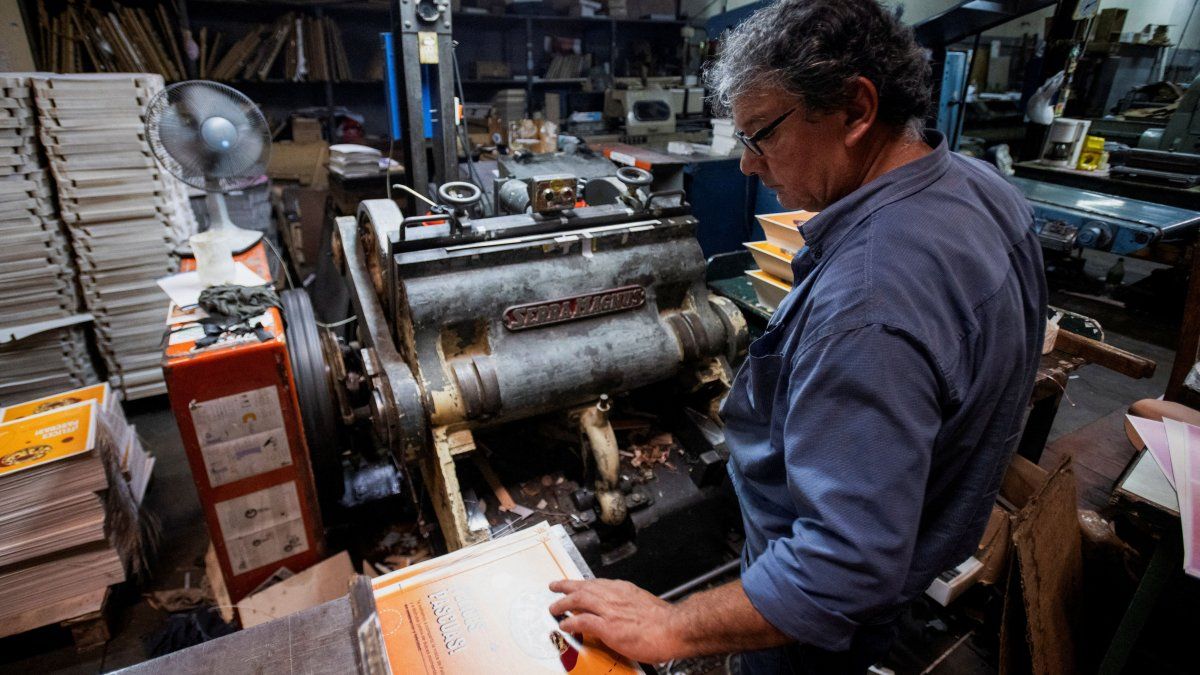He Increase in labor litigation in companies is causing alarm among employers industrial. After the reform applied to the Occupational Risk Law in 2017, it seemed that the tendency for employees to file lawsuits against their employers was going to decrease. In fact, for a while, what the sector calls the “lawsuit industry” was stopped, but after a period of relative calm, it returned.
Following their last biweekly meeting, the Board of Directors of the Argentine Industrial Union (UIA) warned about the growth of litigation related to work accidents and called for generating provincial forensic medical bodies.
The UIA points out: “The Department of Social Policy presented the indicators on the increase in judicialization and its impact on the productive sector in cases related to work accidents. In this regard, It was highlighted that, in August of this year, the Workers’ Compensation Insurers (ARTs) were notified of the existence of some 13,750 lawsuits, while the accumulated stock of new lawsuits in 2024 reaches 81,709.”
Request to the provinces
The claim of the businessmen is that the provinces have fully adhered to the latest amendment to the law that was done during the previous Mauricio Macri administration, in 2017. Until then, the number of trials was about 120,000 a year. Among other things, the provinces were asked to have their provincial legislatures issue their own laws adhering to the national regulations.
This is because the labor jurisdiction is under the jurisdiction of the provinces, so that, even if a national law establishes certain issues in labor matters, the subnational states are always required to adopt them. At first, most of the trials were initiated in provinces that had not yet adopted national laws.
The amendment introduced Improvements in the amounts that ARTs have to pay in cases of accidents or occupational diseases, in addition to establishing a table of illnesses and value for damage suffered by an employeeThe change did not close the legal avenue for cases in which the employee does not agree with what the insurance company offers.
But in all the provinces, less Mendozastill were not constituted forensic bodies to assist judges in the event that an employee’s claim is referred to that instance. These technicians have to determine the degree of disability caused by an accident to a worker and the judge must determine the damage.
The judges summon ad hoc experts and then compensation is determined far above what the ARTs offer. The criteria of the law are not used to establish degrees of damage, nor the corresponding compensation, which creates an incentive to litigate. The detail of what companies complain about is that the experts do not charge a fixed amount for their work but a percentage of the verdict, which in turn creates an incentive for them to overestimate degrees of damage. In Mendoza, the forensic experts charge a fixed amount for their work and immediately, without waiting for the conclusion of a process that can last years.
The claim of insurance companies
The Argentine Union of Workers’ Compensation Insurers (UART) warned in a statement that “the increase in litigation in the occupational risk system is a threat that urgently needs to be resolved.”
“There is no time for further delays. Despite the constant decrease in accidents and deaths in the workplace, the lesser severity of these, the immediate, timely and comprehensive care, the permanent and automatic updating of monetary compensation and the regulatory reforms in line with jurisprudence, legal claims continue to grow. A paradox that is difficult to explain: fewer accidents, better services and more benefits, but more and more lawsuits,” the entity said.
Like the UIA, the entity called on the provinces to establish bodies of forensic experts, whose fees would be unrelated to the outcome of the trials.
The Central Bank also intervenes
The other side of labor litigation is that Judges use very different criteria to update their sentences due to the effect of inflation. Some propose the use of the Reference Stabilisation Coefficient (CER) plus a few points. Others adopt interest capitalisation criteria that multiply the values.
In this regard, a few weeks ago the country’s most important insurance companies raised this problem with the economic team at a meeting in which I was the Minister of Economy, Luis Caputo. And this resulted in the latest announcement by the Central Bank, which proposes the use of the court fee, something that is not new. It is calculated based on the performance of a fixed-term deposit from the Banco Nación. It is an application that can be used on the agency’s website.
The BCRA has been preparing and publishing the Interest Rate for use by the Courts since 1991. This rate was originally set in accordance with the regulations defined in Decree 941/91, and is currently in line with the regulations as stipulated in article 768 of the Civil and Commercial Code of the Nation.
This rate is calculated based on the performance of fixed-term deposits and remunerated savings accounts and reflects the economic reality existing at any given time, considered consistently over a period of more than 30 years.
Source: Ambito
I am a 24-year-old writer and journalist who has been working in the news industry for the past two years. I write primarily about market news, so if you’re looking for insights into what’s going on in the stock market or economic indicators, you’ve come to the right place. I also dabble in writing articles on lifestyle trends and pop culture news.




